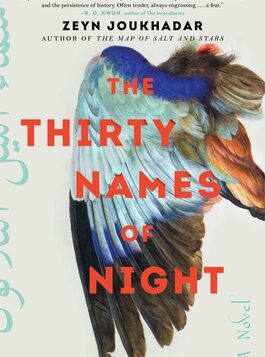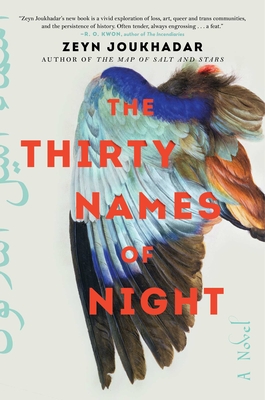THE QUEST to discover one’s true identity is a central theme in much of world literature. Zeyn Joukha-dar’s new novel, The Thirty Names of Night, explores this issue from a multiplicity of angles. Indeed, if James Joyce’s mission was “to forge in the smithy of [his]soul the uncreated conscience of his race,” Joukhadar’s mission seems to be to detail not only his own trans journey, and his grandmother’s unconventional relationship, but also, in the process, to detail three generations of Syrian-American experiences in America.
The novel begins with a narrator addressing an absent mother as “you,” a device that occasionally creates confusion, especially in a novel in which the pronouns are unconventional, meaning there is more than one “you” and also a “they.”
With all that going on, the novel seems to be trying to do too many things at once. The story is split between the actions of the narrator and the somewhat cryptic entries in the secret journal. The author attempts to create drama by slowly piecing together these fragments, but we never get a clear sense of who the narrator is and why this quest is so important. What’s more, the characters in the journal never fully come alive.
It is tempting to compare this book to another recent work with which it shares some common elements, namely Ocean Vuong’s On Earth We’re Briefly Gorgeous. Both novels are addressed to “you,” and both are works in which the narrator is trying to create a sense of identity in an unsympathetic environment and culture. But whereas Vuong’s book is full of immediacy and specificity, Joukhadar’s narrative is more nebulous and prosaic. Because the narrator is so consciously intent upon erasing their identity as a female, a true sense of who they really are never clearly emerges, and a full engagement with both the journey and the nascent identity of the narrator is never really achieved.
That said, The Thirty Names of Night does occasionally soar and contains some beautiful passages and some good ideas. A recurring motif is bird imagery, which helps to unify the narrative, but the bird references are so relentless that this feels overdone. There are birds falling from the sky or roosting everywhere on buildings at seemingly every major event, an obsessive search for a rare bird that only two people have ever seen, frequent references to Syrian-American refugees as “birds,” and a love interest named “Little Wing.”
For all that, this novel is an interesting exploration of Syrian-American culture and an affecting examination of an emerging trans identity. One only wishes that at some point the author had focused on one story or the other, which could have allowed the novel to take flight.
Dale Boyer is the author ofThe Dandelion Cloud, Thornton Stories, and Justin & the Magic Stone.







